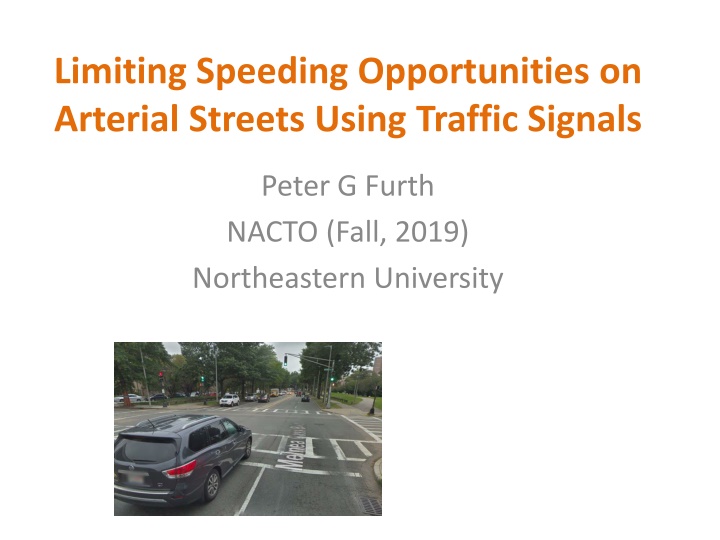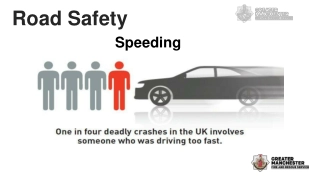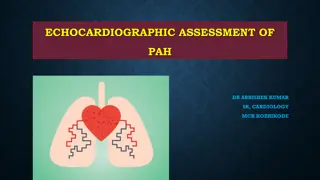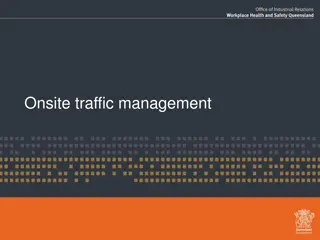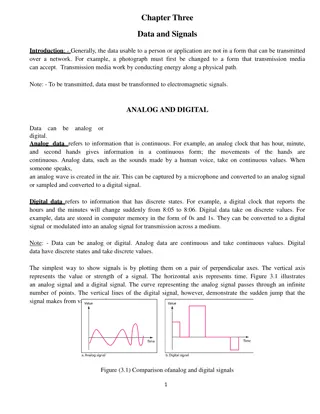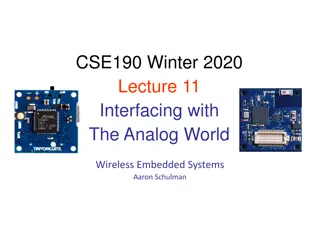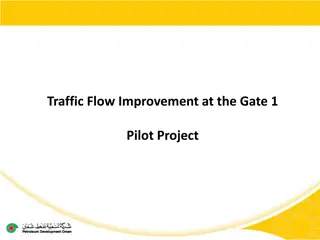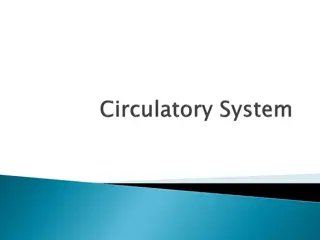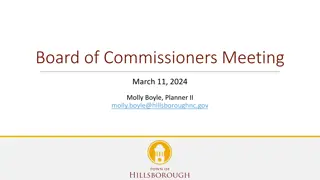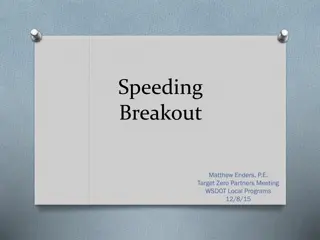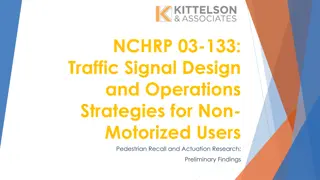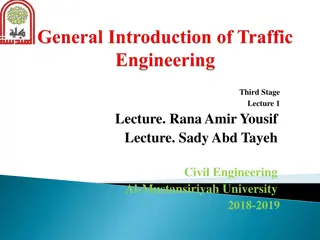Managing Speeding Opportunities on Arterial Streets Using Traffic Signals
The study discusses strategies to limit speeding opportunities on arterial streets, particularly focusing on the impact of traffic signal coordination on reducing speeding incidents. Results from simulation tests and real-world observations are presented, highlighting the effectiveness of signal control methods in addressing speeding concerns. The importance of prioritizing speed control over through traffic is emphasized to enhance road safety and traffic management.
Download Presentation

Please find below an Image/Link to download the presentation.
The content on the website is provided AS IS for your information and personal use only. It may not be sold, licensed, or shared on other websites without obtaining consent from the author.If you encounter any issues during the download, it is possible that the publisher has removed the file from their server.
You are allowed to download the files provided on this website for personal or commercial use, subject to the condition that they are used lawfully. All files are the property of their respective owners.
The content on the website is provided AS IS for your information and personal use only. It may not be sold, licensed, or shared on other websites without obtaining consent from the author.
E N D
Presentation Transcript
Limiting Speeding Opportunities on Arterial Streets Using Traffic Signals Peter G Furth NACTO (Fall, 2019) Northeastern University
At this site, 22% of vehicle arrivals at the stop line were speeding opportunities, that is: arrive on a stale green, and no car ahead in your lane (headway > 5 s) unconstrained (Same result from simulation as from field observation.) S S S S S S S Massachusetts Avenue, Boston (South End); average signal spacing = 660 ft Why should we care? What can we do about it?
midblock crossing S S S S S S S Simulation test: 3 control strategies 1. Large coordination zone (all 7 signals), coordinated-actuated control,C = 120 s. That s the conventional method, and is what s recommended by Synchro. Midblock crossing double cycles (60 s). All signals run free (fully actuated, uncoordinated). 2. 3.
C = 80 s C = 80 s C = 65 s free S S S S S S S Simulation test: 3 control strategies 1. Large coordination zone (all 7 signals), coordinated-actuated control,C = 120 s. That s the conventional method, and is what s recommended by Synchro. Midblock crossing at the left double cycles (60 s).. Small coordination zones with short cycle lengths. All signals run free (fully actuated, uncoordinated). 2. 3.
Results A.M. Peak Hour 1.Average delay 2.Average corridor delay (delay to cars running the full length of the corridor) 3.Speeding opportunities Average vehicular delay (s) If we care about speed control, maybe we shouldn t prioritize through traffic so much.
One-Way Coordination Can Limit Speeding Opportunities But Not If the Cycle is Long (Lots of Excess Green) If the Cycle is Short (little excess green)
2-Way Coordination Yields the Same Perfect Green Wave as 1-Way if Intersection Spacing is Ideal But It Never Is! Ideal spacing: Travel time between signals = C / 2. This is not practical for urban conditions. yellow = left turn phase
When intersection spacing is shorter than ideal, coordination looks like this: Clusters of intersections with (near) simultaneous green Cluster of 3 intersections that turn green, red together Cluster size = number of blocks one can travel in half a cycle
When intersection spacing is shorter than ideal, coordination looks like this: Clusters of intersections with (near) simultaneous green with lots of speeding opportunities! Larger clusters have more speeding opportunities. Large clusters result from: long cycle length high progression speed short intersection spacing
Five Ways to Reduce Speeding Opportunities 1. Fully actuated control Amsterdam, the Hague 2. Short cycles No longer than needed for capacity For much of the day, 60 s is achievable 3. Short coordination zones Zurich: zones with 1 to 3 intersections
Five Ways to Reduce Speeding Opportunities 4. Low progression speed, such as 33 ft/s (22.5 mph) Progression speed should be ~ 10% lower than target speed, because cars speed up to fill holes created when other cars turn off Low progression speed helps compress the platoon, makes operation more efficient Low progression speed, together with short cycle length, result in smaller cluster size
STUDY SITE 2: MELNEA CASS BLVD in Boston (parallel to Mass Ave, 0.5 mi away) 6 signals; average spacing = 592 ft Coordinated-Actuated, One Zone
Unconstrained Vehicles (a.k.a. Speeding Opportunities) vs. Progression Speed (mph), Cycle Length, & Traffic Volume (off- peak / peak = 0.6) conventional solution Synchro solution for 25 mph A better solution Melnea Cass Blvd, Boston. 6 signals, spacing ~ 600 ft
The Delay / Speeding Opportunities Tradeoff: Big safety benefits can be possible with little or no added delay conventional solution Synchro solution for 25 mph A better solution Each data point represents a solution from the previous slide
Five Ways to Reduce Speeding Opportunities 5. Pedestrian Recall or Max Recall for side streets Avoid giving extra green to the arterial it creates speeding opportunities No recall Ped recall Max recall Melnea Cass Blvd, Boston, off-peak
